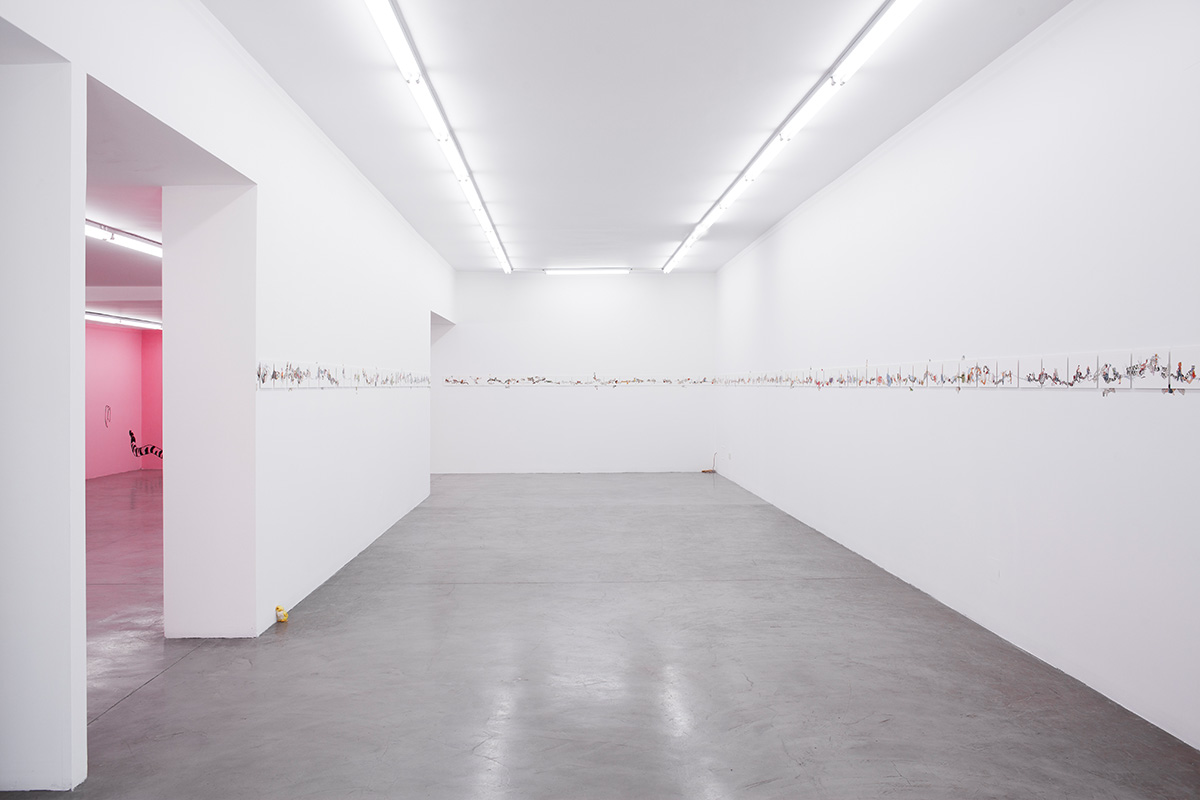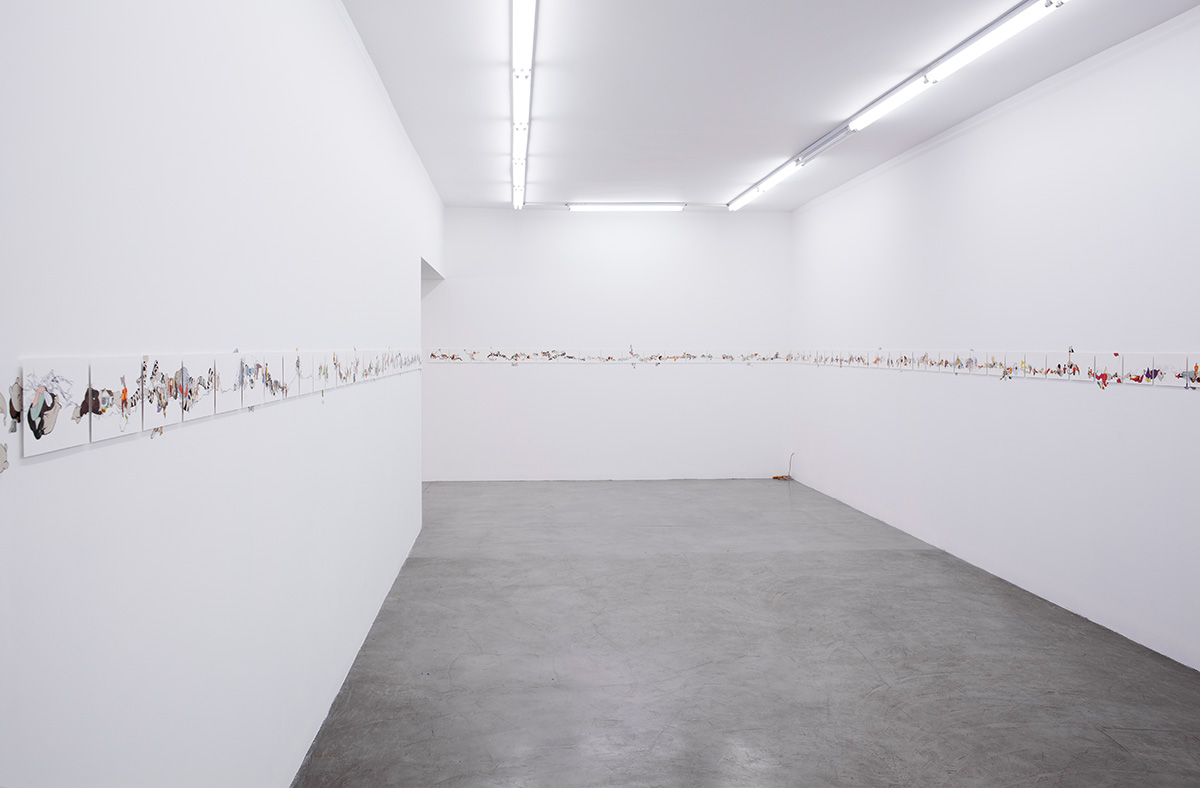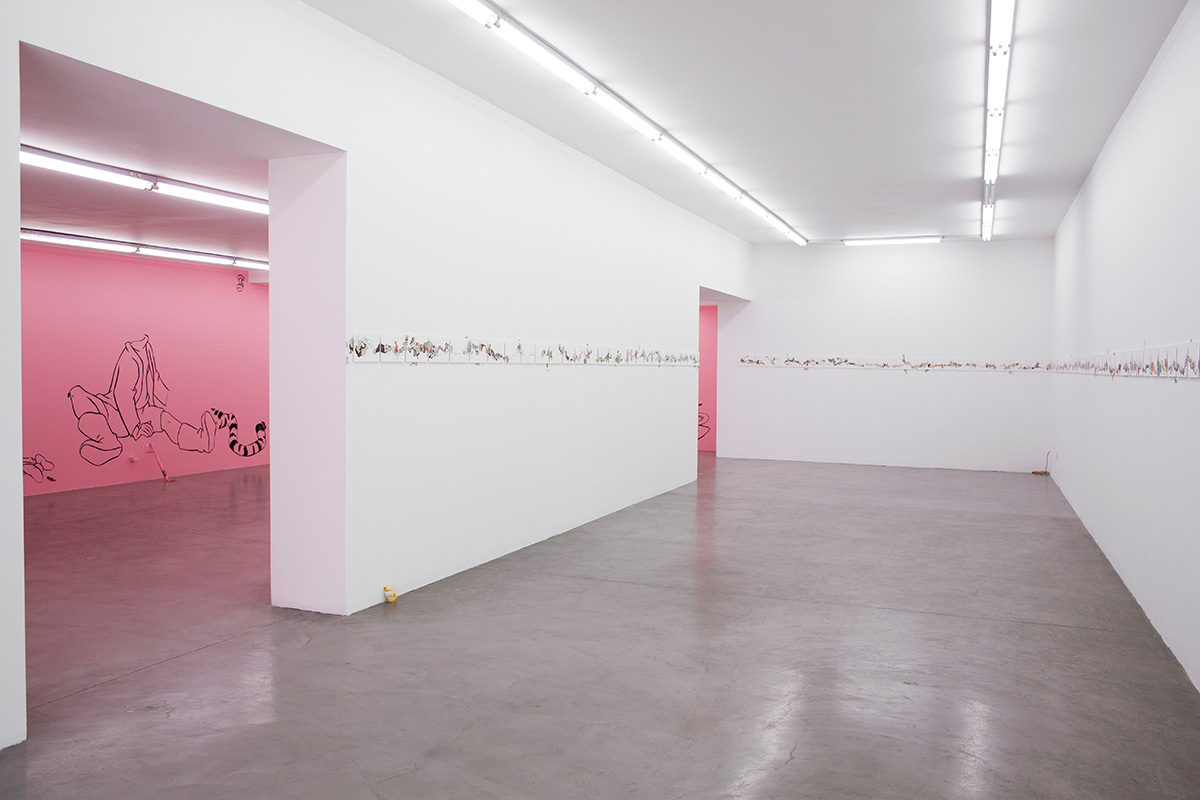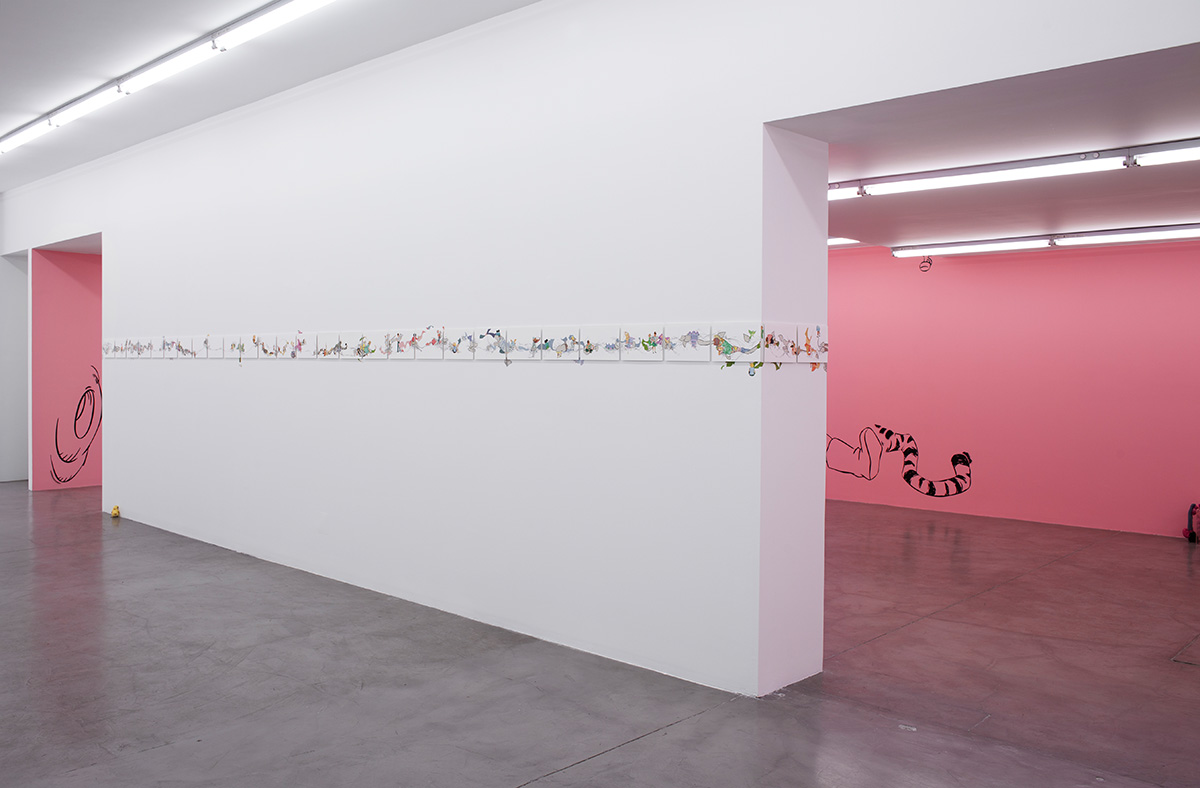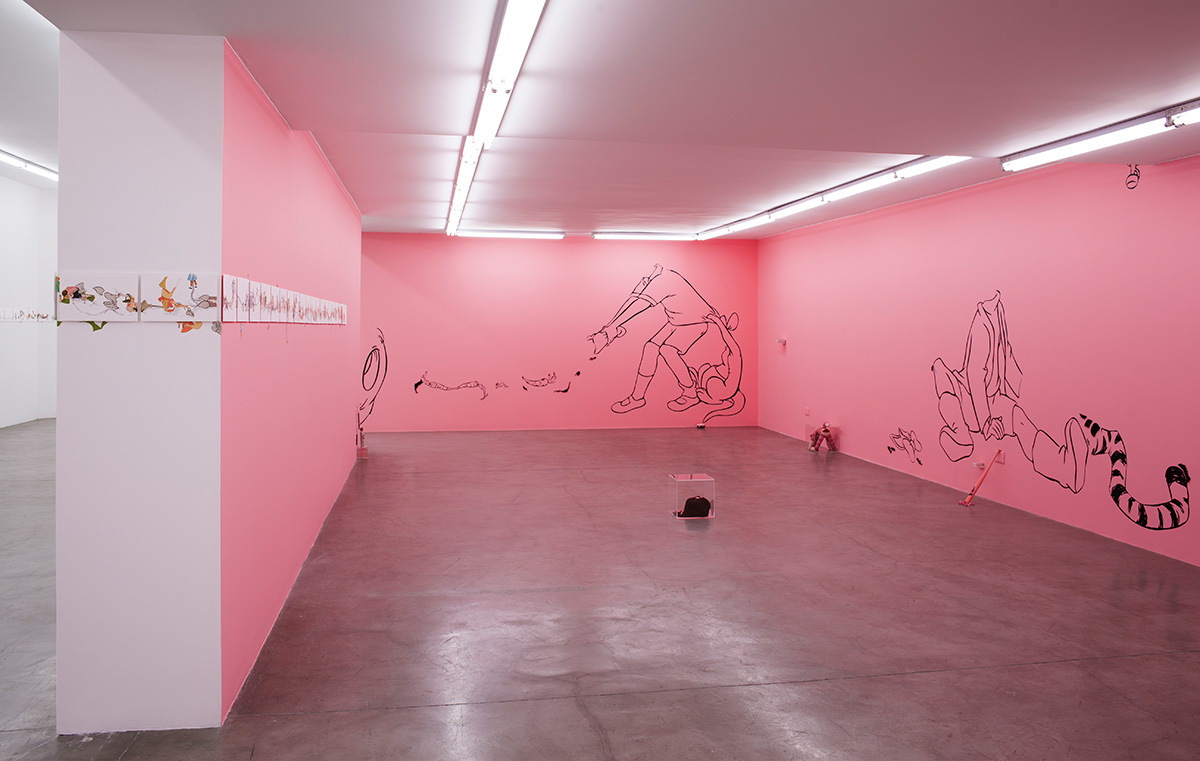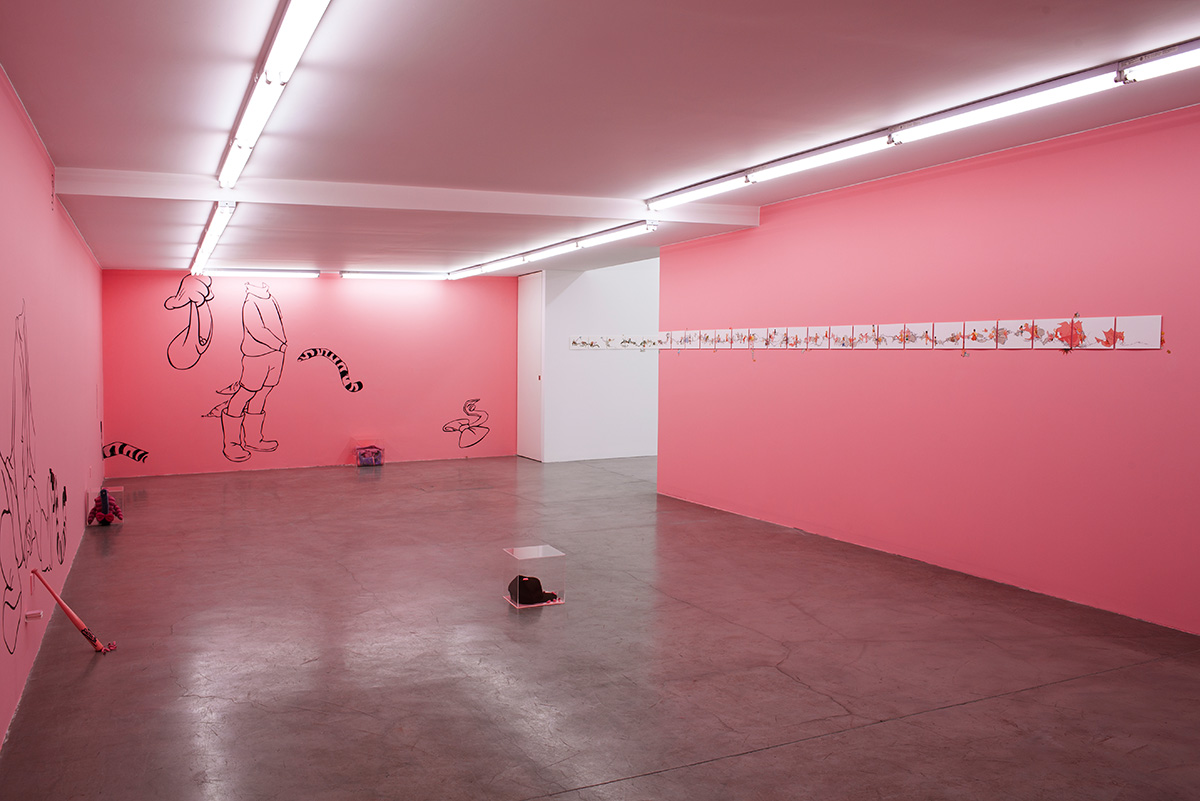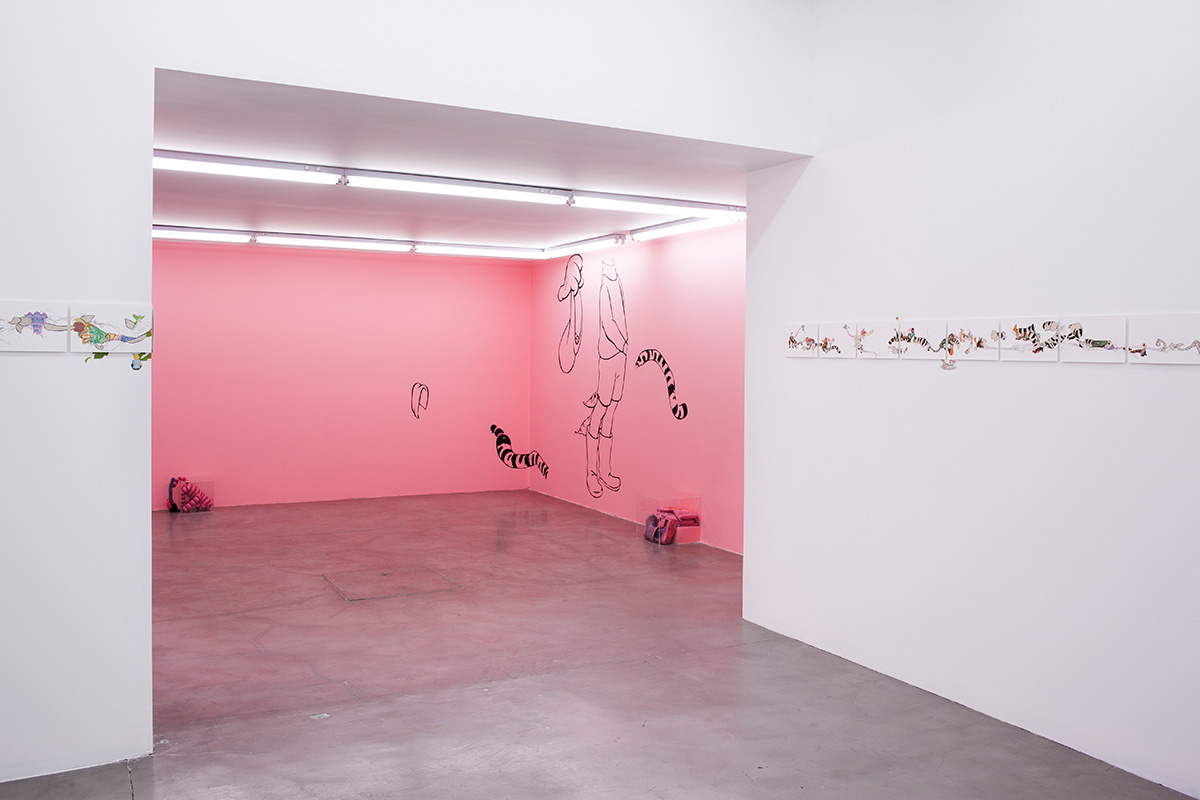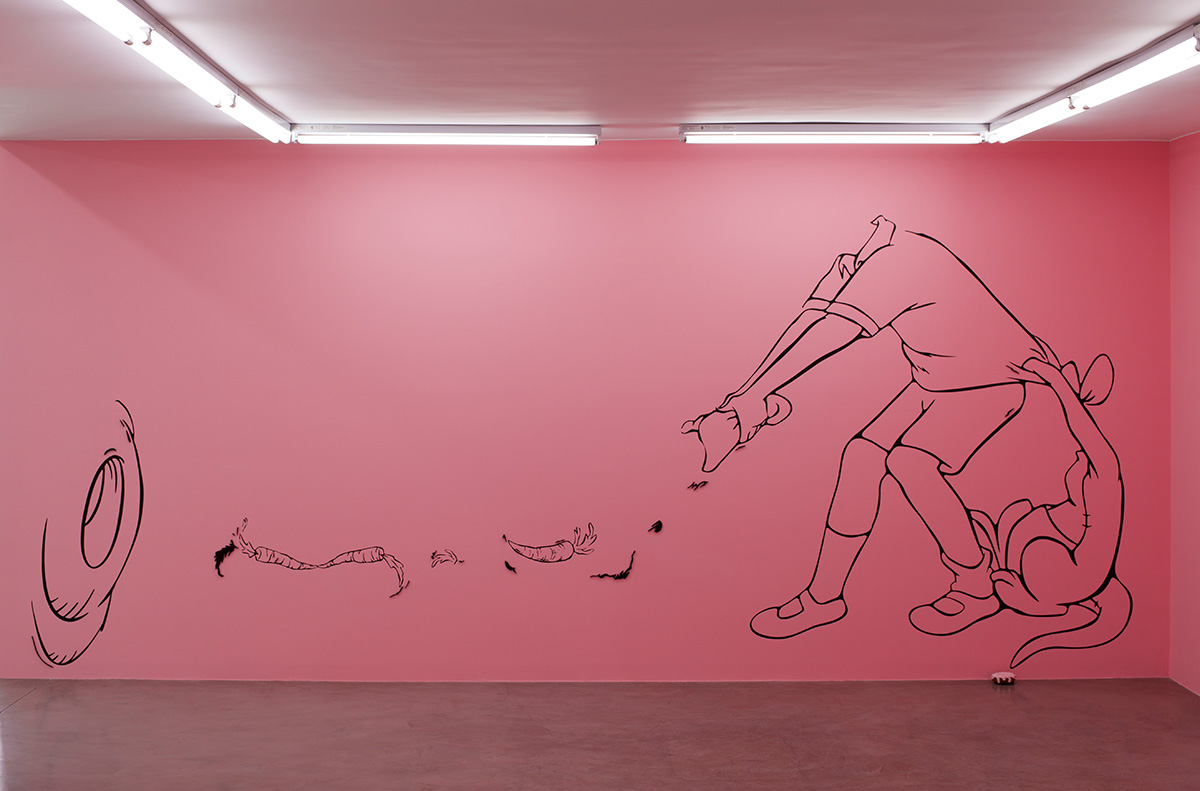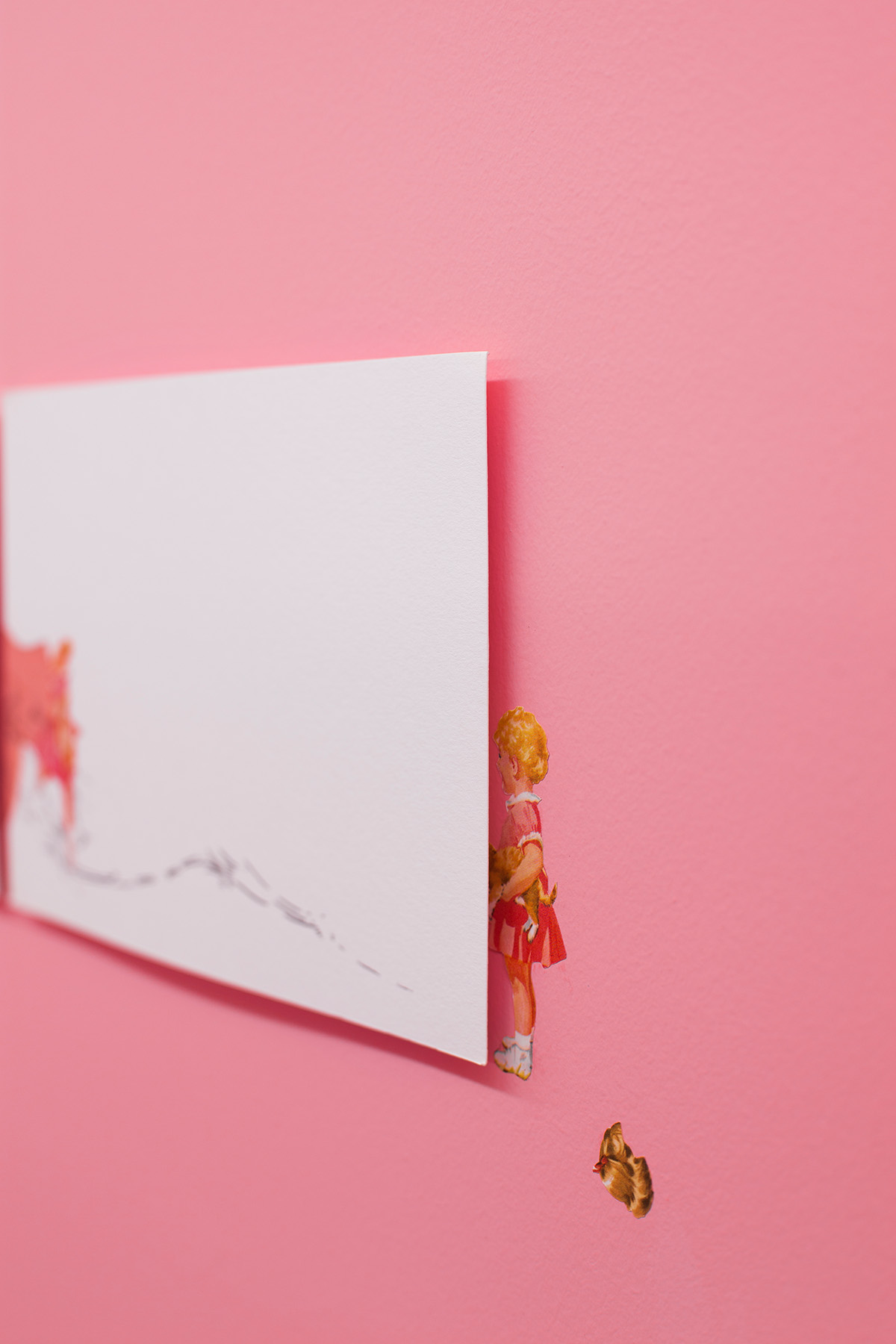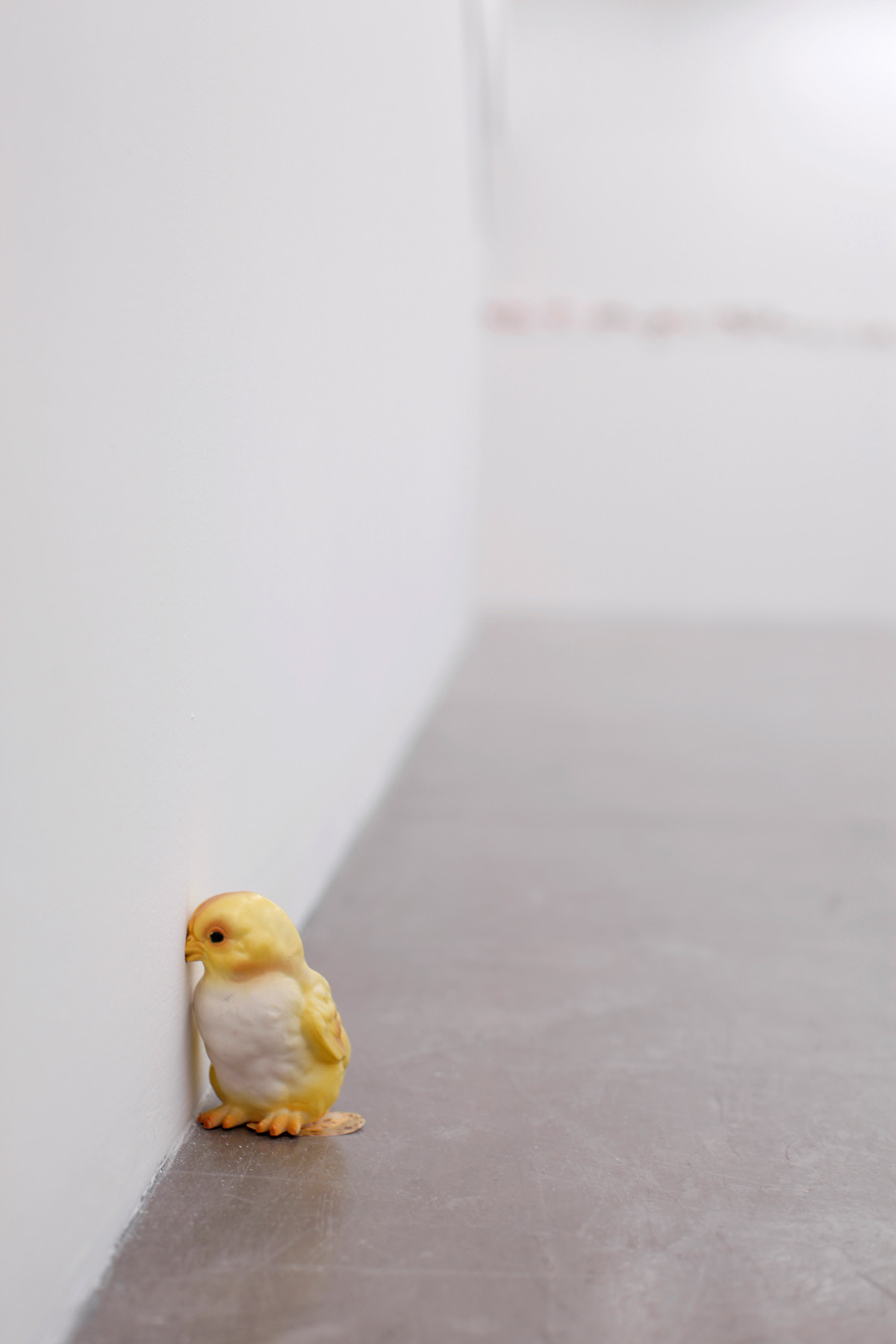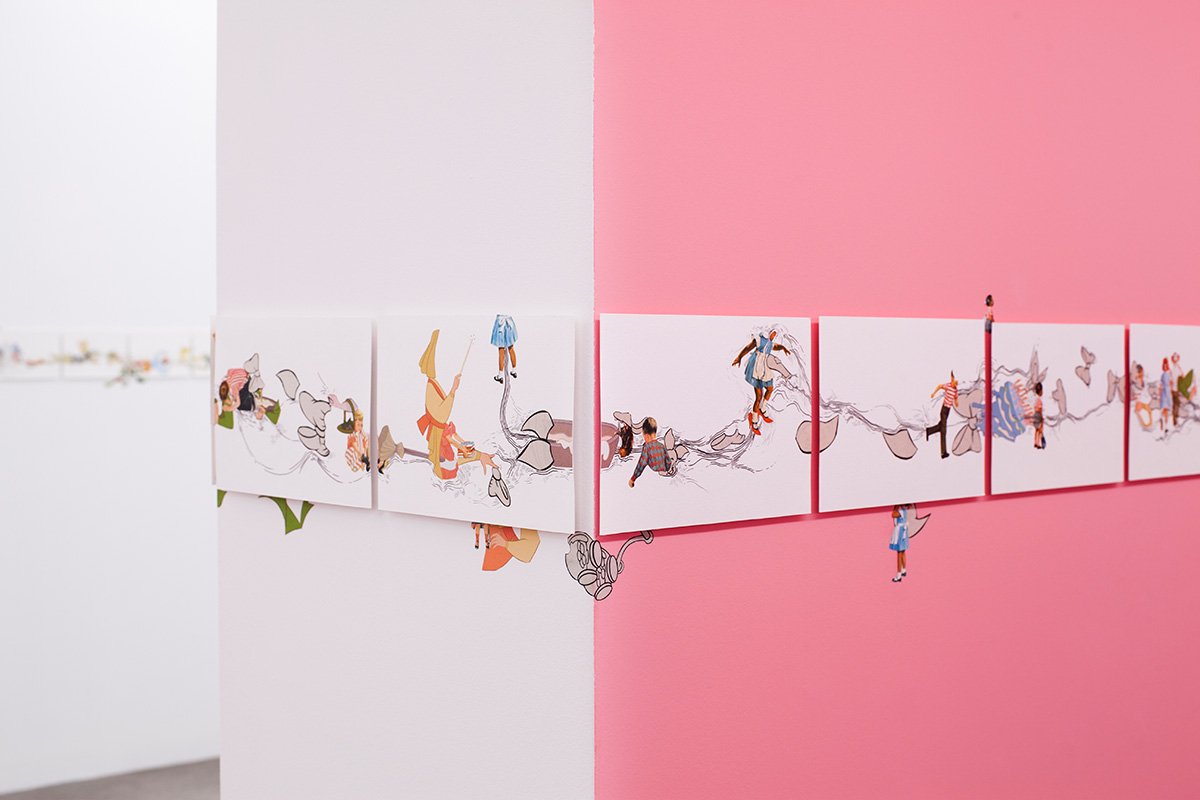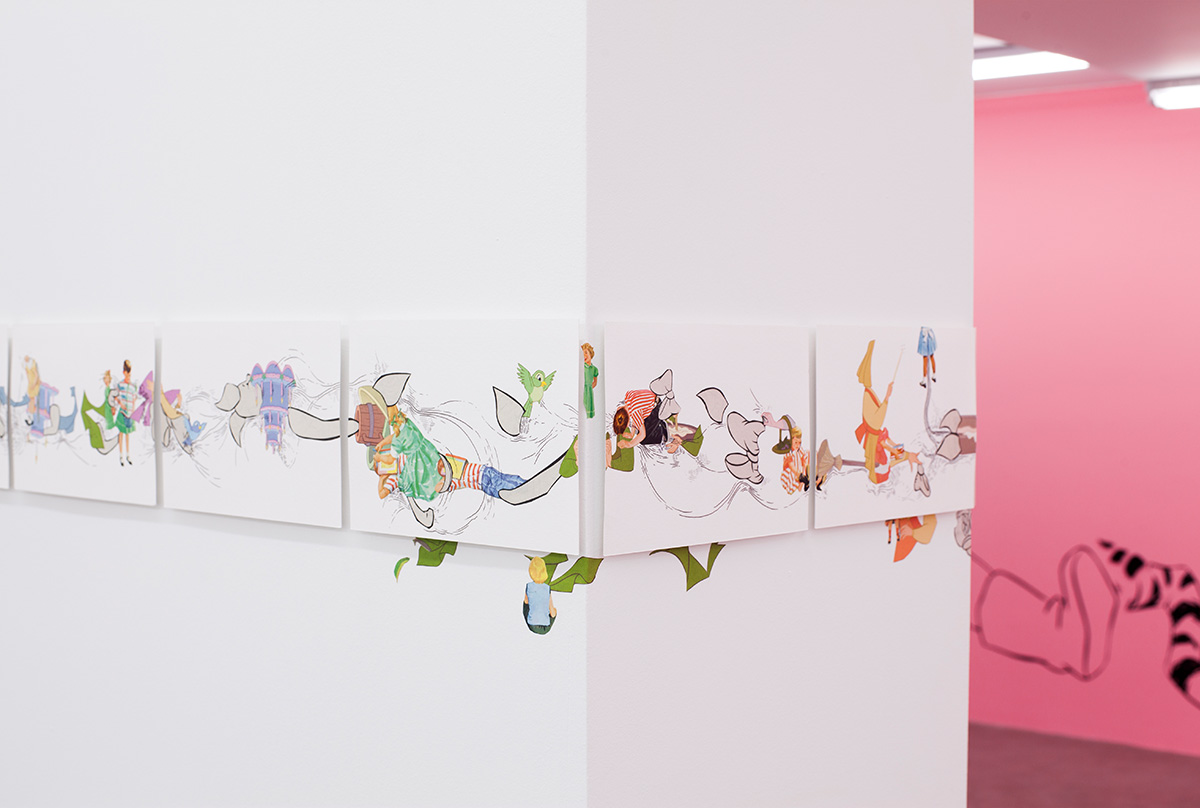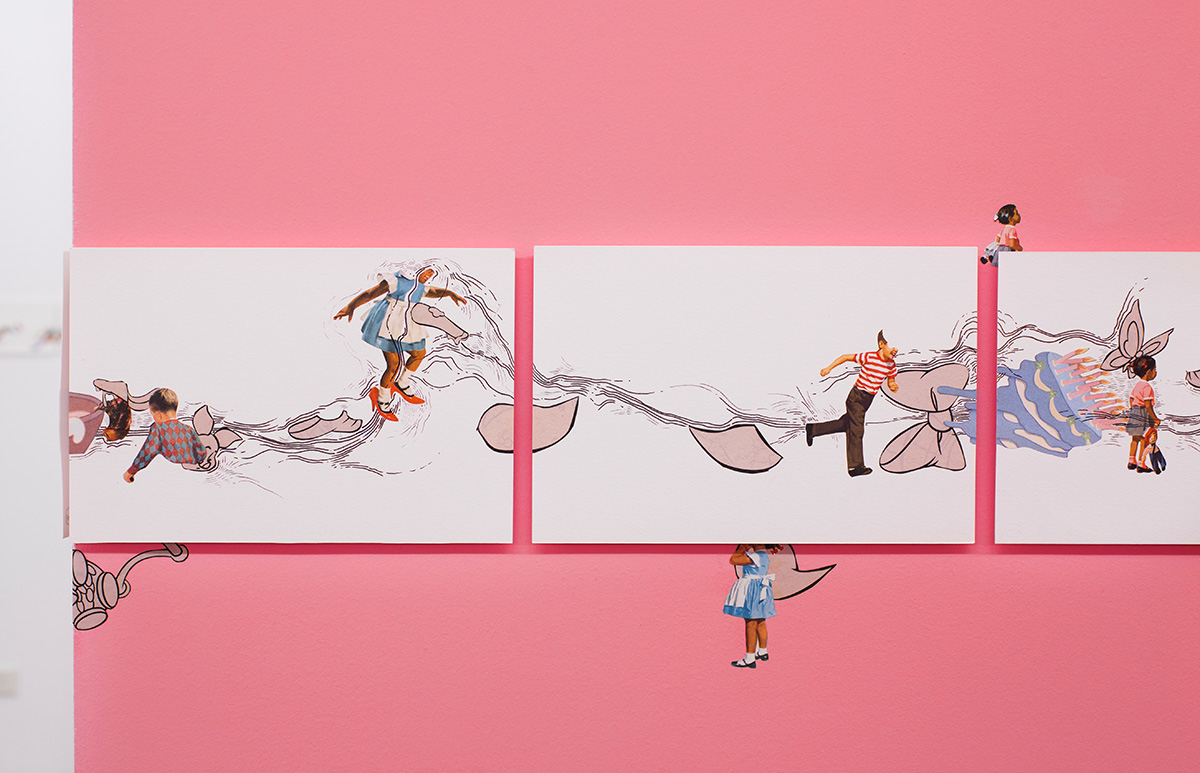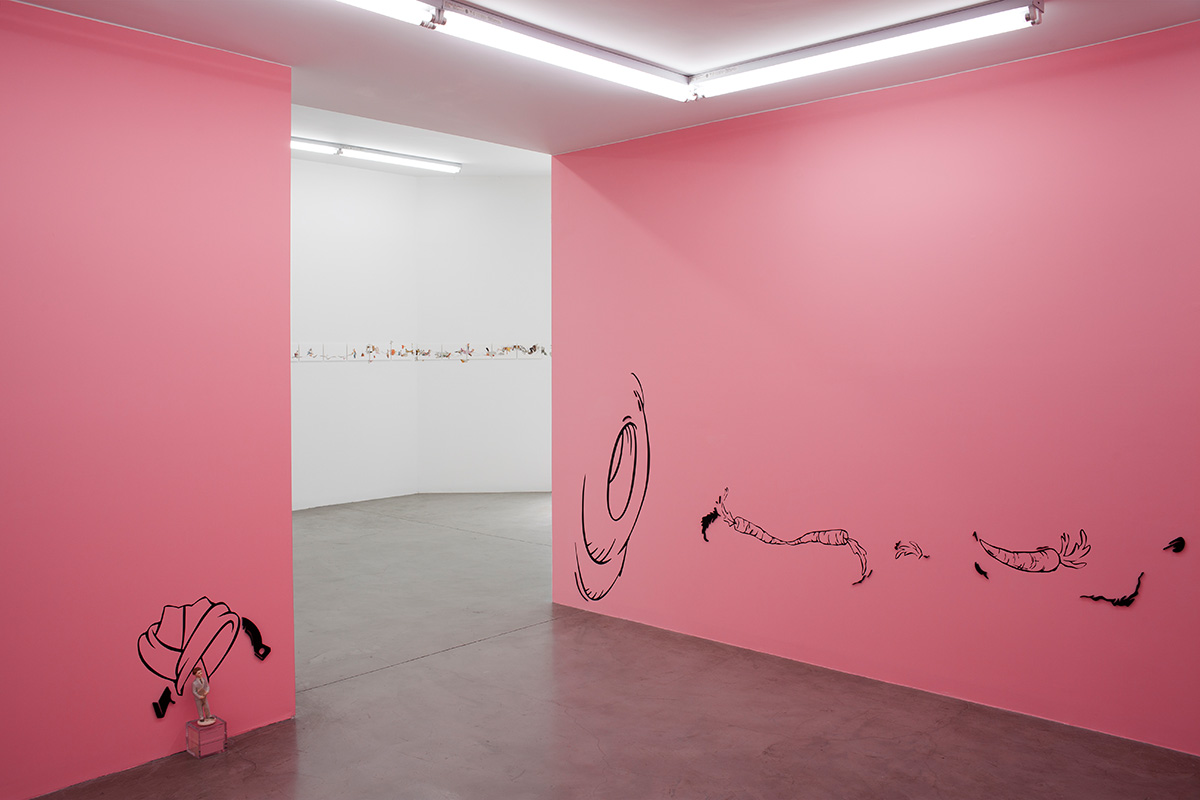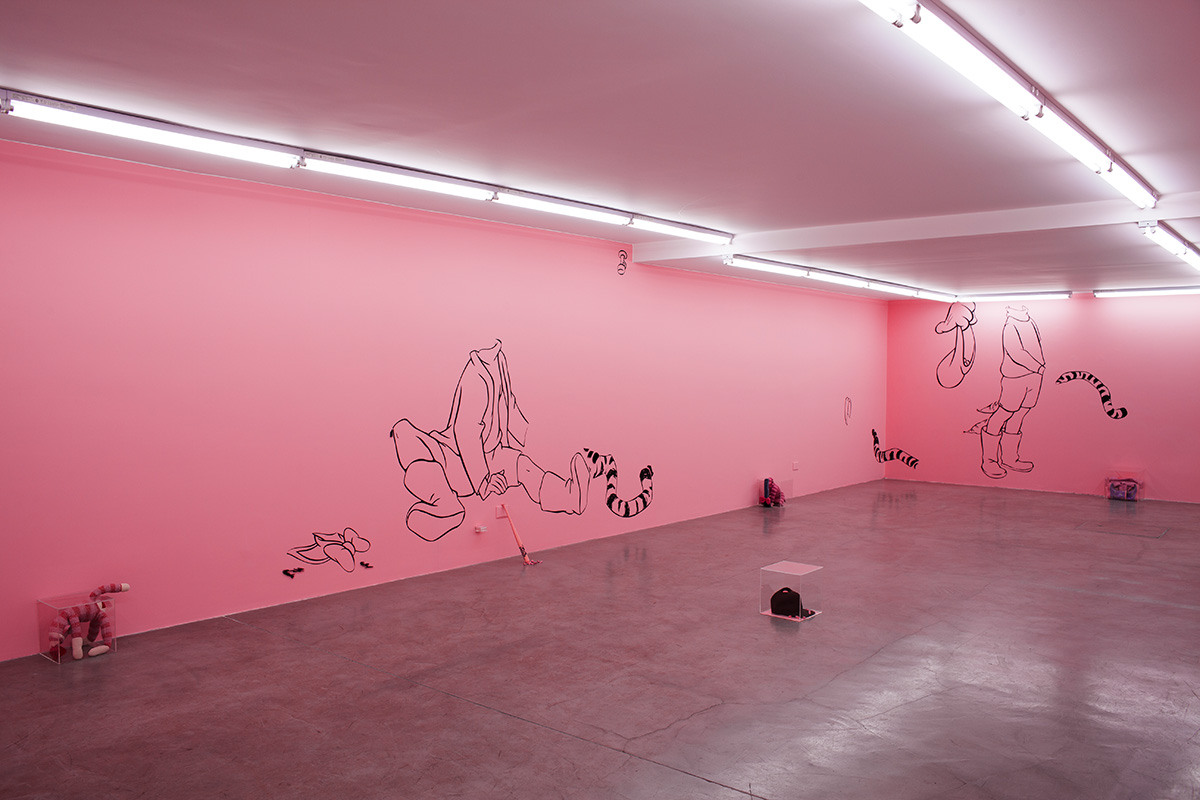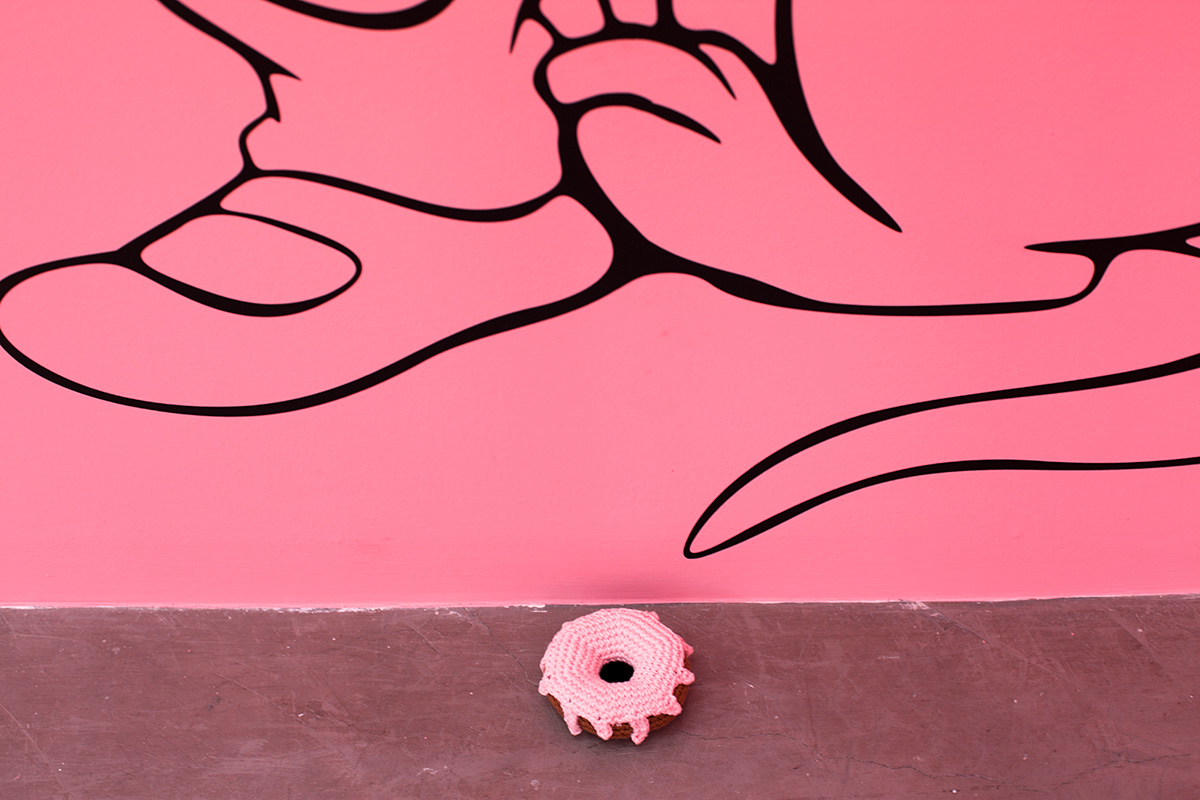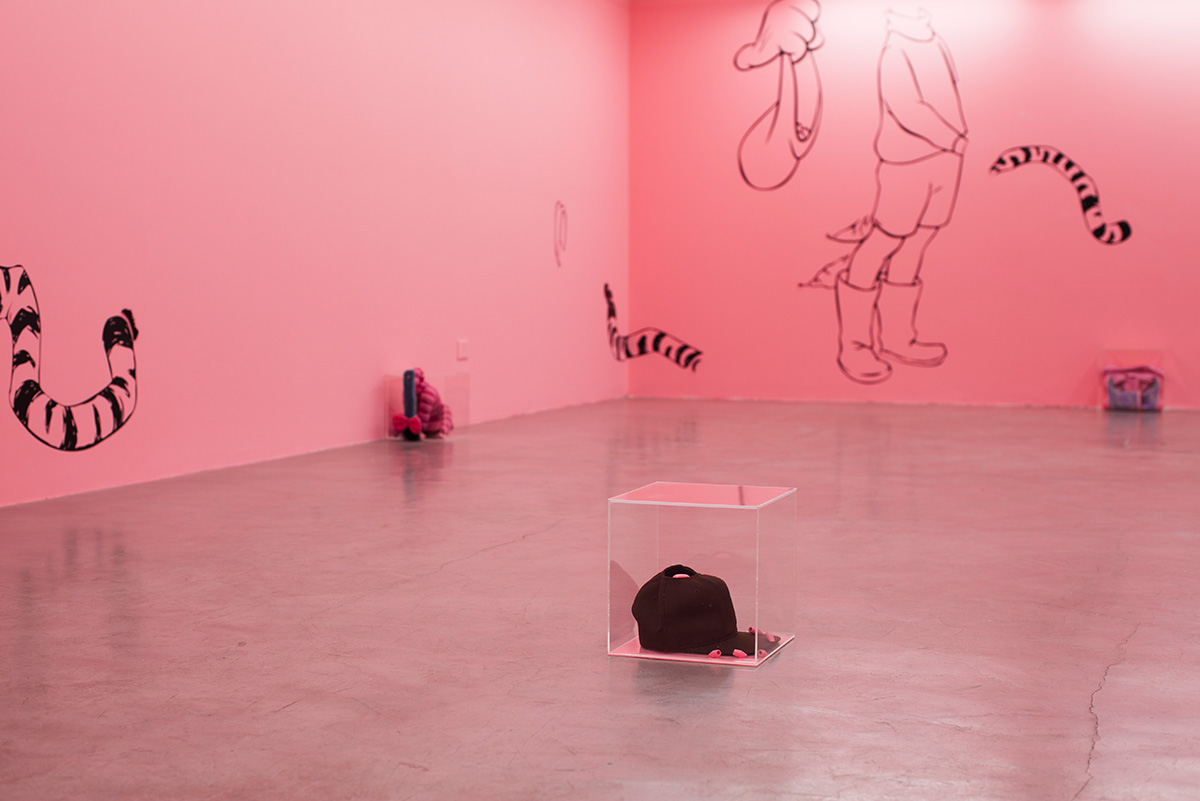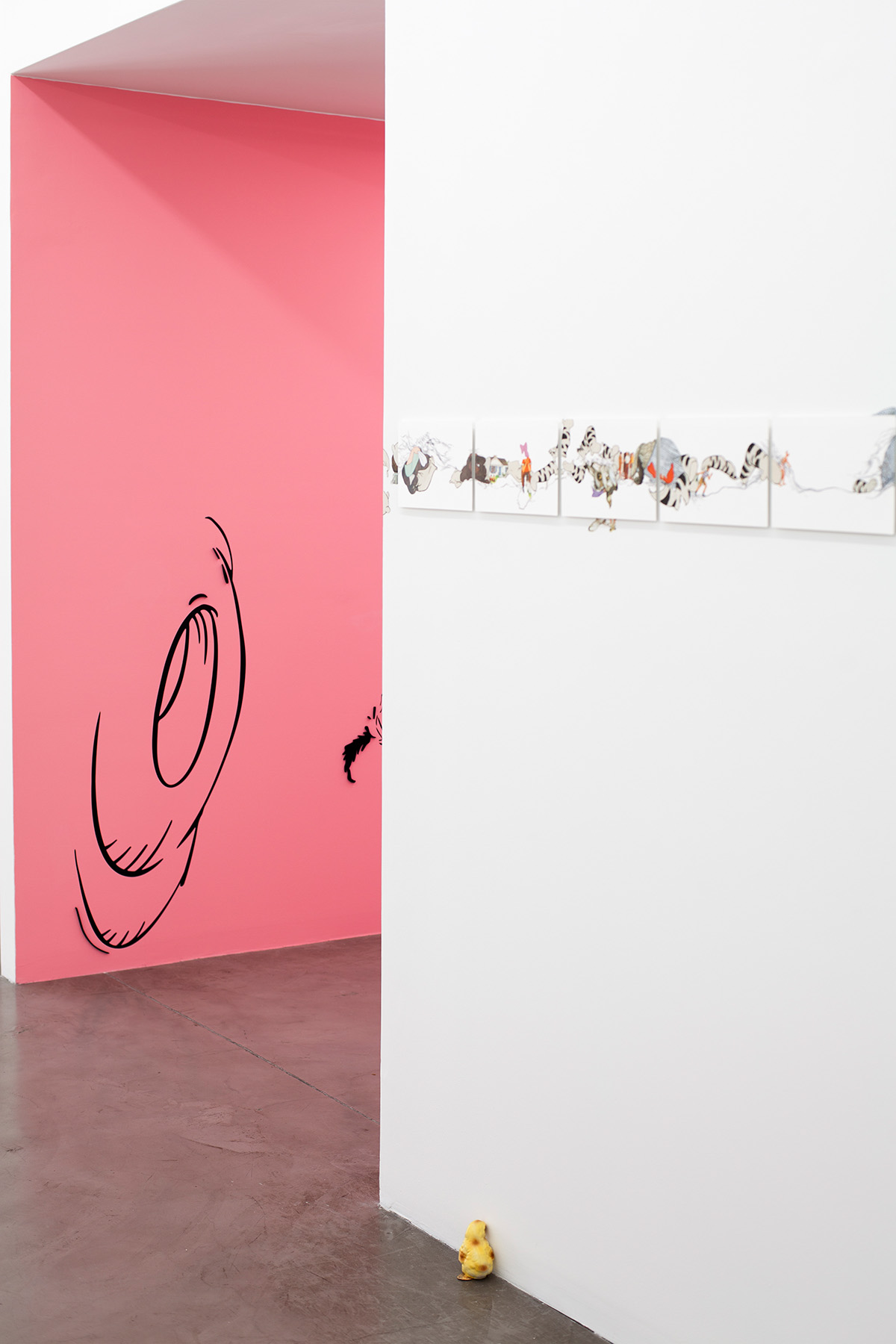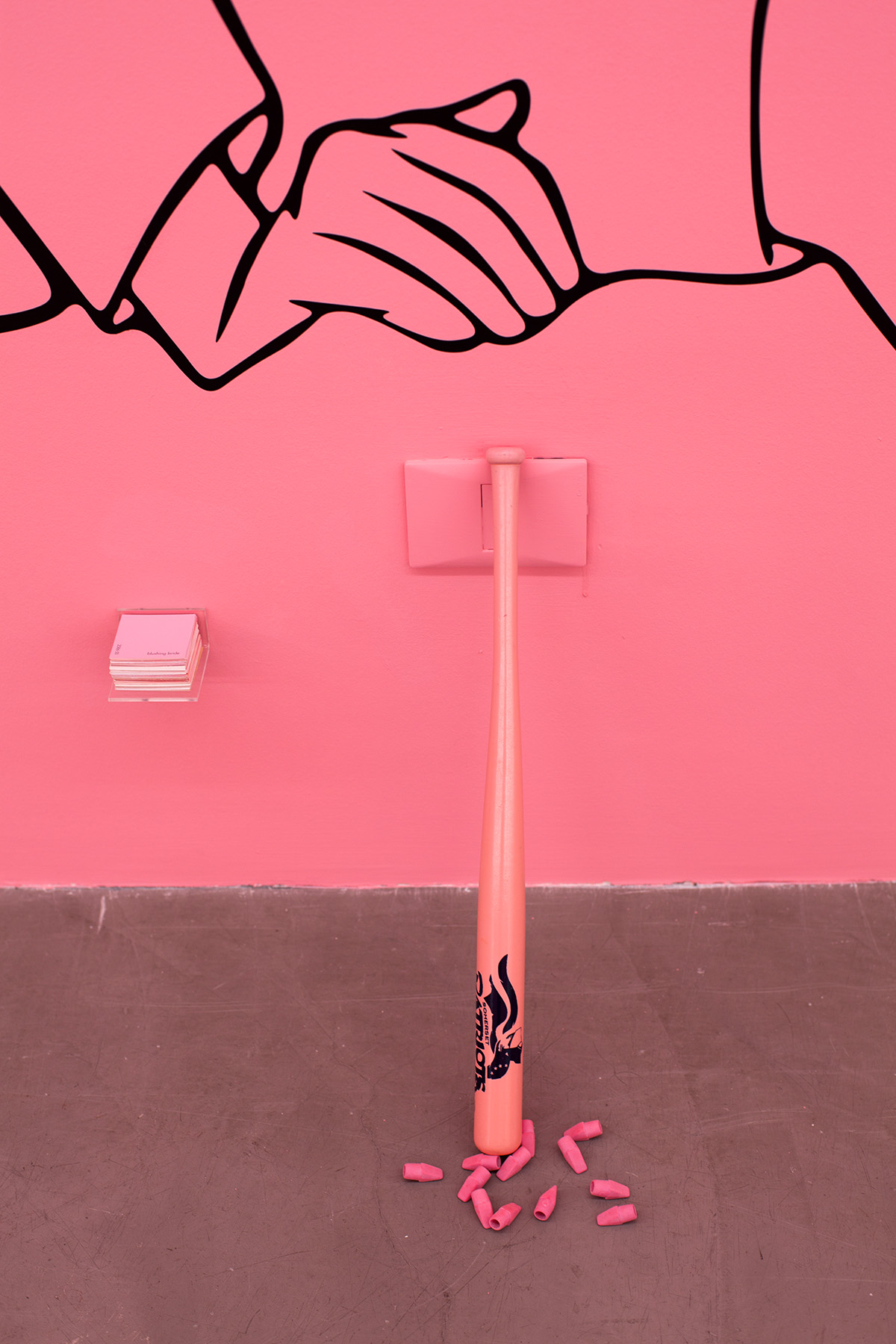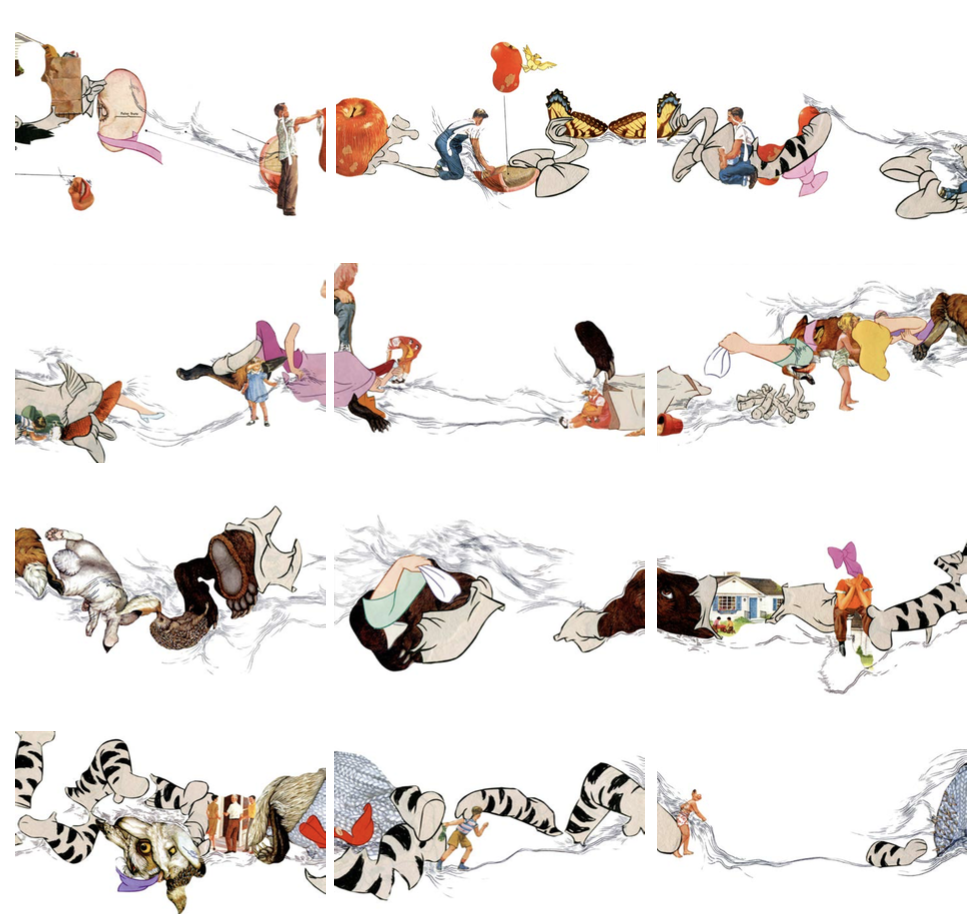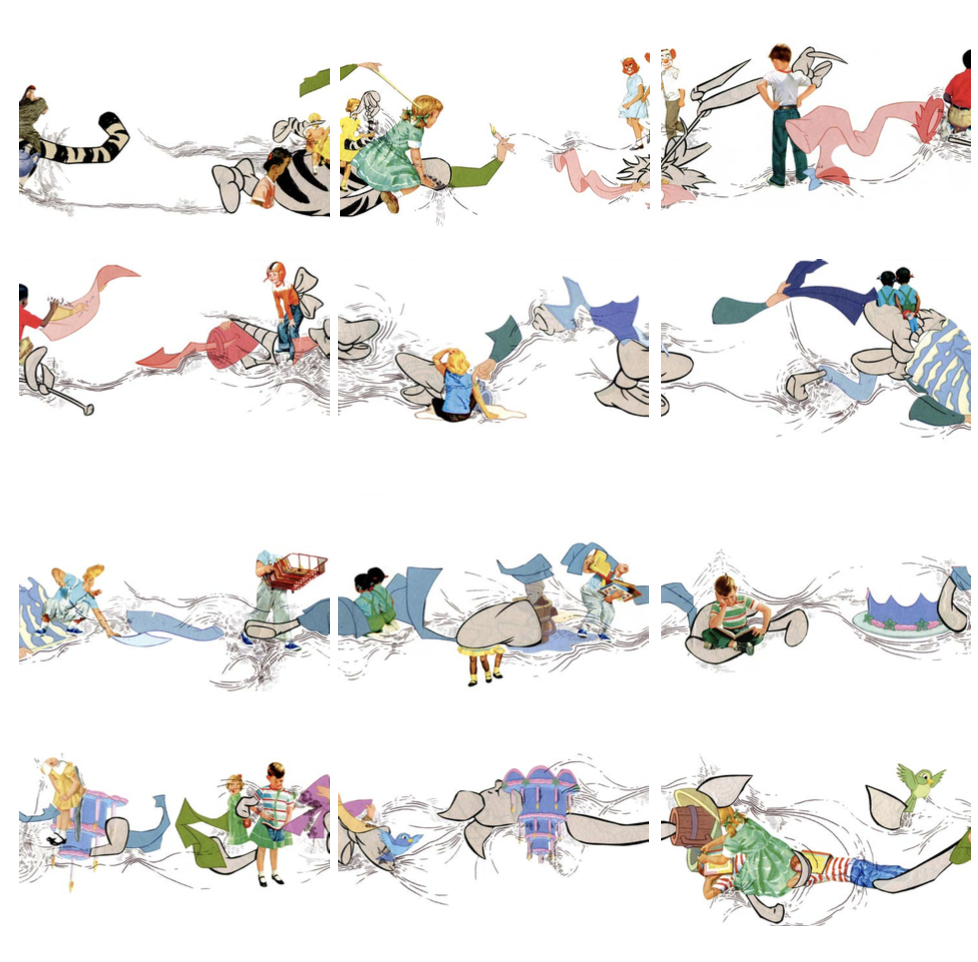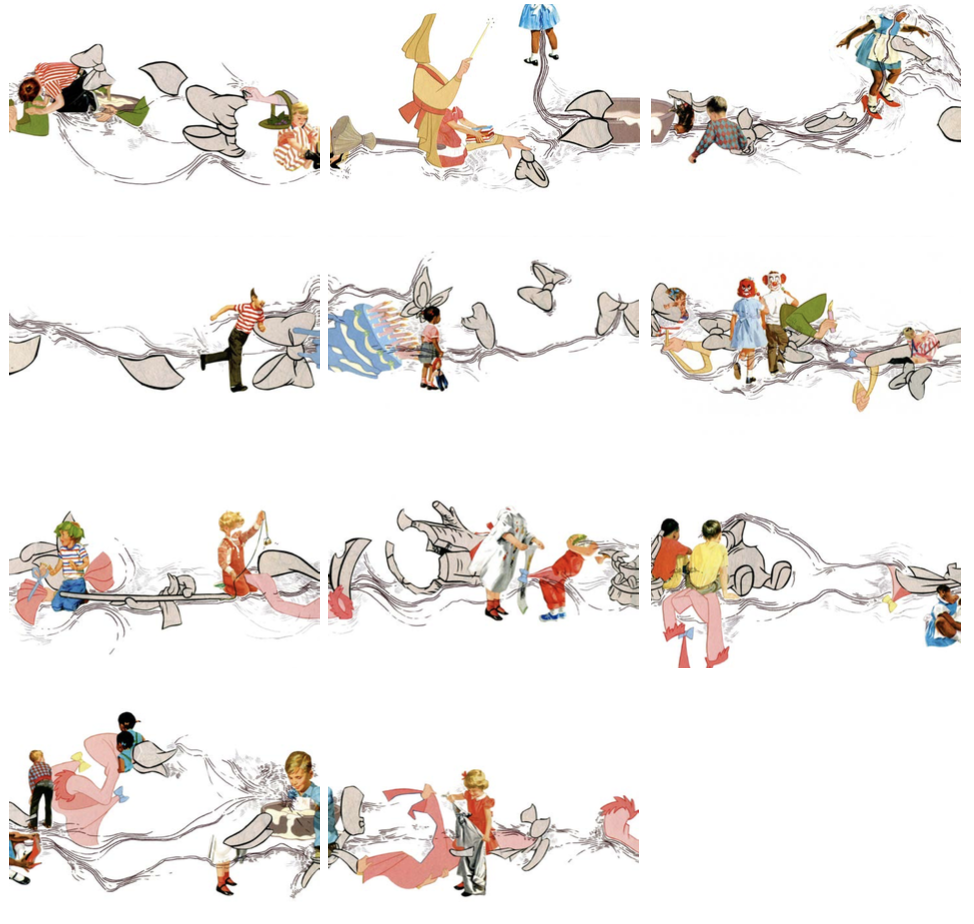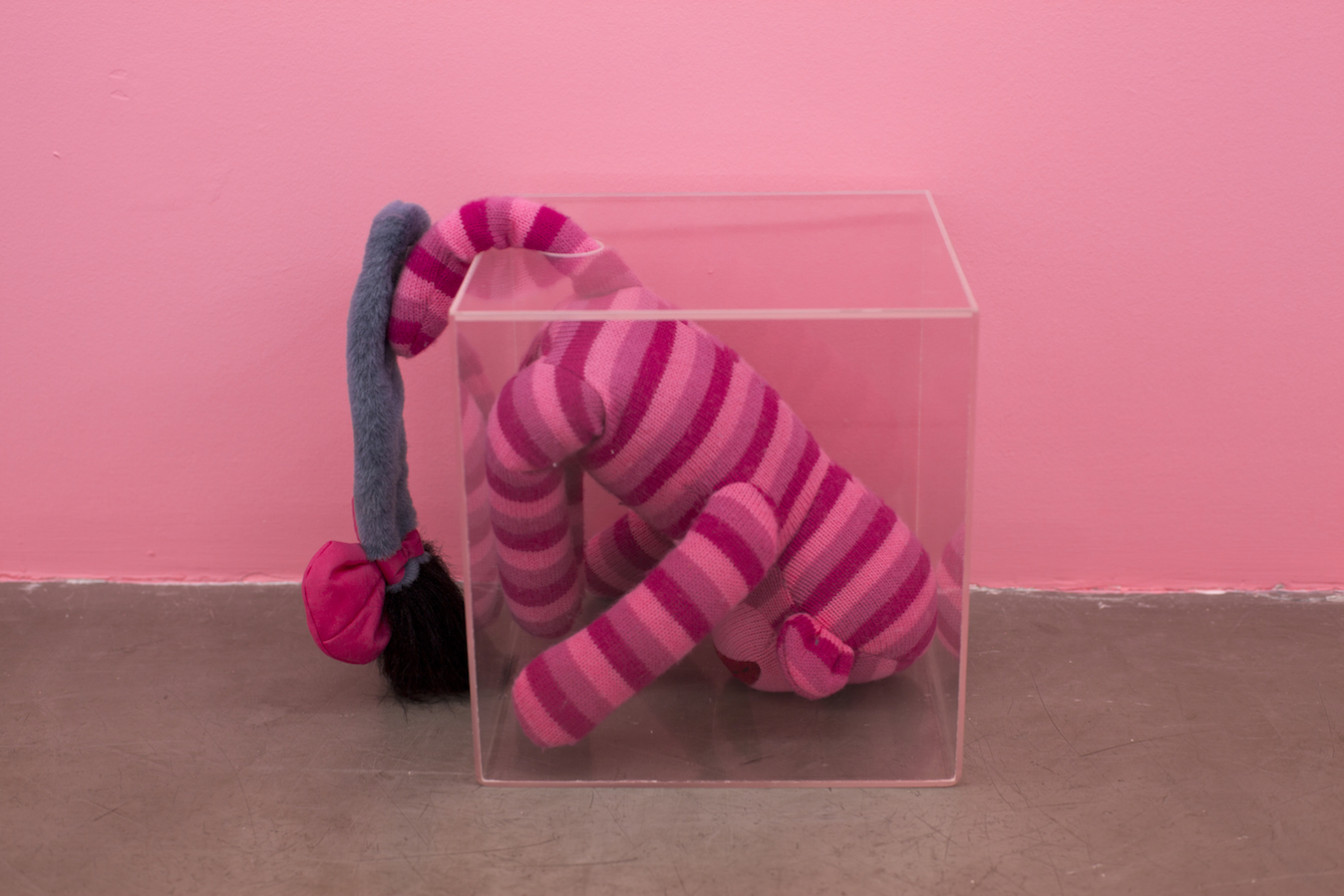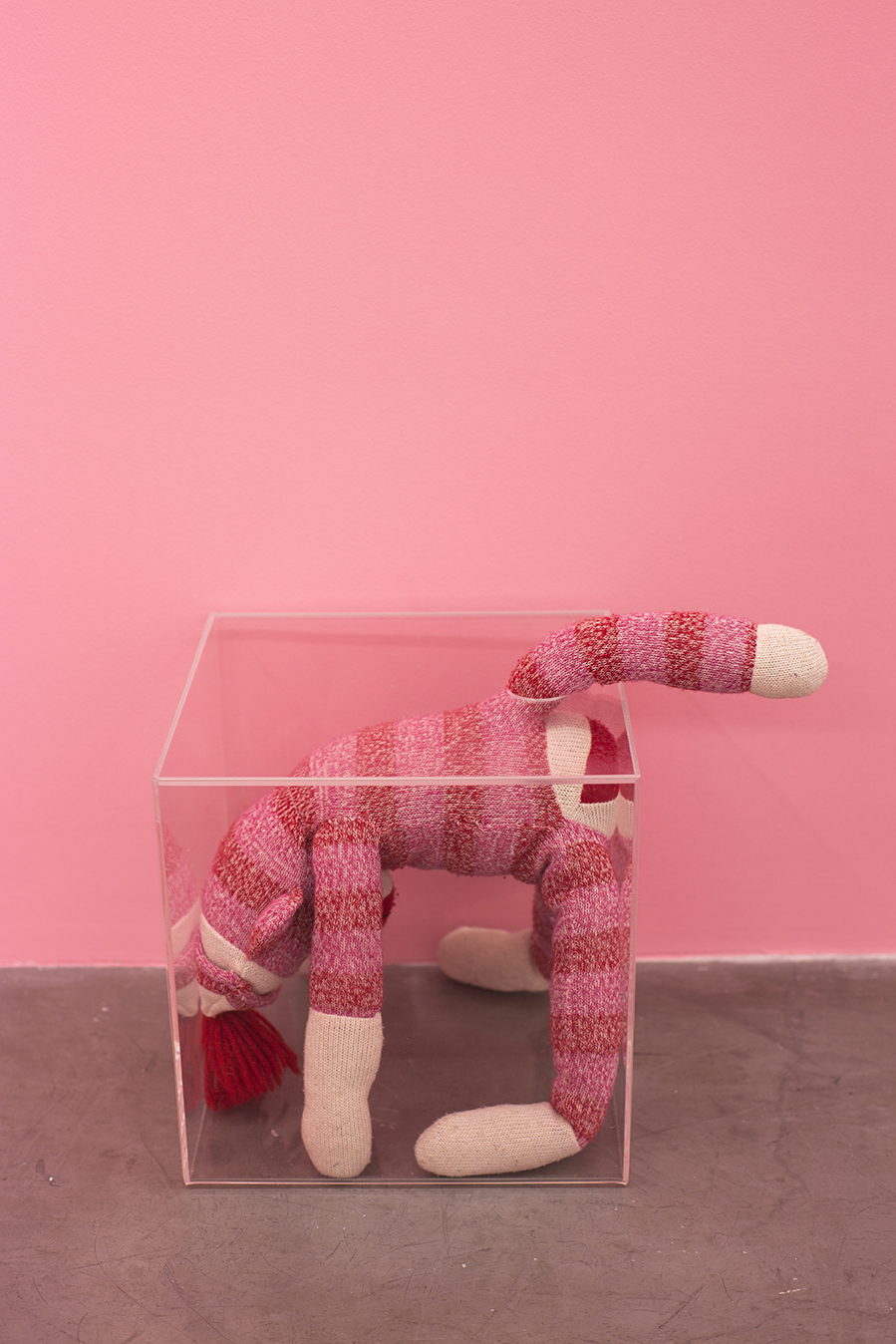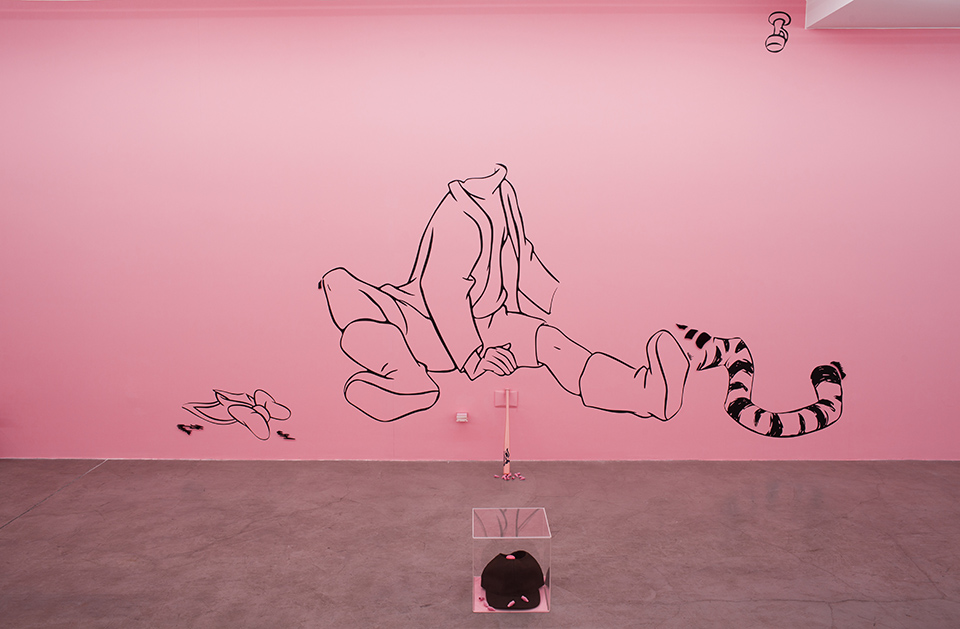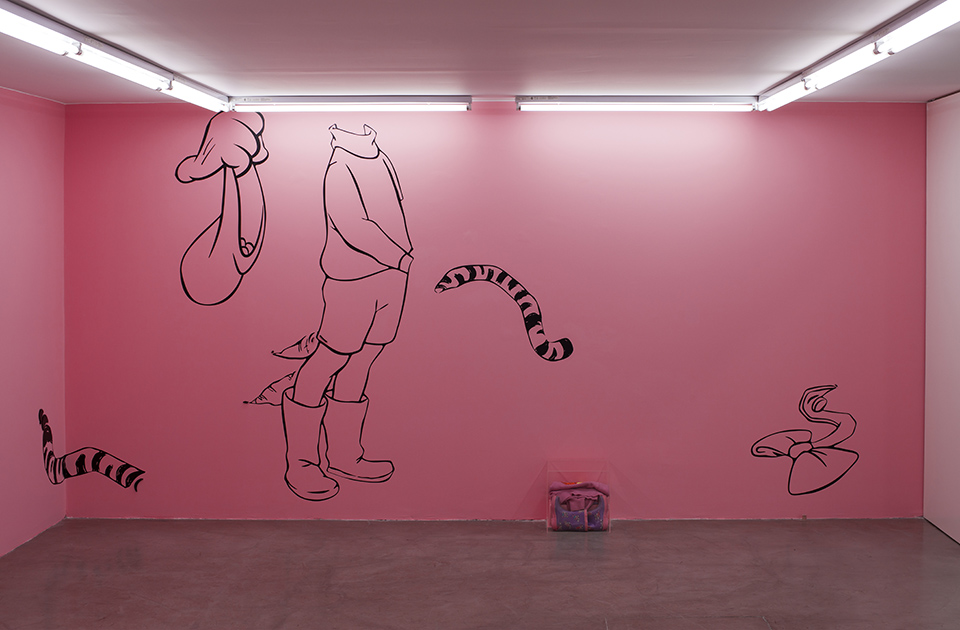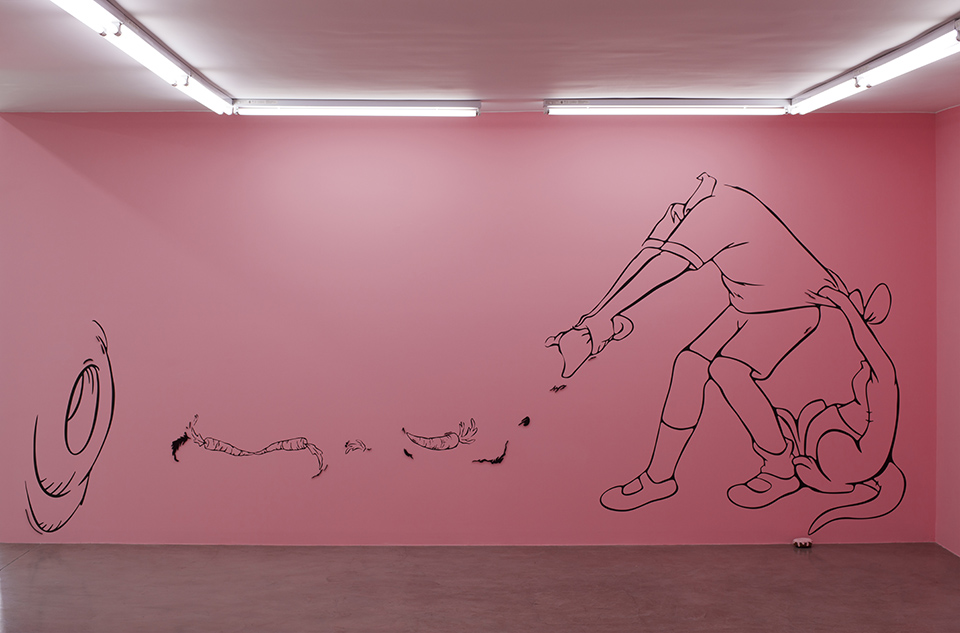Growing Sideways
CATALINA SCHLIEBENER
curaTED BY John Chaich
mar 14. — aPr 29. 2017
EXHIBITION VIEW
Ph. Ignacio Iasparra
WORKS
Growing Sideways, 2016-2017
Catalina Schliebener
Installation of collages on paper
Variable dimensions
Growing Sideways, 2016-2017
Catalina Schliebener
Installation of collages on paper
Variable dimensions
Growing Sideways, 2016-2017
Catalina Schliebener
Installation of collages on paper
Variable dimensions
Growing Sideways, 2016-2017
Catalina Schliebener
Installation of collages on paper
Variable dimensions
Growing Sideways, 2016-2017
Catalina Schliebener
Founded object on acrylic
15.7 x 11.8 x 10.6 in
Growing Sideways, 2016-2017
Catalina Schliebener
Founded object on acrylic
15.7 x 11.8 x 10.6 in
Growing Sideways, 2016-2017
Catalina Schliebener
Vinyl on wall and found objects
Variable dimensions
Growing Sideways, 2016-2017
Catalina Schliebener
Vinyl on wall and found objects
Variable dimensions
Growing Sideways, 2016-2017
Catalina Schliebener
Vinyl on wall and found objects
Variable dimensions
TEXT
CATALINA SCHLIEBENER & JOHN CHAICH in dialogue
John Chaich: The title of this exhibition references a concept written by the queer scholar Catherine Stockton Bond. In her book, Growing Sideways, Or Queer Children in the Twentieth Century, Bond compares the normative view of “growing up” to a concept of “growing sideways” for queer people. She writes: “Growing sideways suggests that the width of a person’s experience or ideas, their motives or their emotions, may pertain at any age, bringing ‘adults’ and ‘children’ into lateral contacts of surprising sorts.” Bond reasons that this is particularly true for LGBTQ people, but for many of us, there are years of ambiguity and play in childhood before adults and social systems tell you that you must conform. Formally, there is a linear, side-by-side design to your installation of dozens of canvases containing drawing-on-collage. How “sideways” is your process in the studio? Do you add the drawings across canvases later, or do you apply drawing or collage apply first on canvas? Do you lay each canvas out to find connections between them? Do the connections find themselves?
Catalina Schliebener: The work process begins long before I begin to compose the collages, looking for the materials with which I am going to work. I go quite often to Thrift Stores, but I also gather many things that I find on the street; I am observing all the time. I work as a nanny in a residential neighborhood in Brooklyn where I usually find many children’s books on the street; Then I start to cut the figures which is perhaps the part of the process that takes me the longest but I enjoy it very much because although it is a very mechanical operation it allows me to go looking at the figures and start making editing decisions. During the last years I have been living between Buenos Aires and New York and I found a particular method of work that adapted to my nomadic condition: I began to make collages on old empty photo albums (Series Trip Diary, 2014-2016). As I did not have much space to work, the format book worked perfectly well and the exercise is also interesting: I cannot detach a page so somehow, the book is also a continuous collage. Thus emerged the series of collages that compose Growing Sideways that I worked on during the last months of 2016, composed of more than a hundred papers that form a great horizontal collage altogether. The making process is like writing a personal diary: I make one piece, and then the next one connects with the previous one and so on. The little strokes or drawings come later and it is somehow the gesture that ends up uniting the pieces. Generally I return later to the previous sections and add new fragments, reason why the temporality in which I realize each collage is not linear nor strictly sequential.
J.C: There’s a great tension between the clean, linear line of the canvases and how organic and fluid the actual visual content is in each collage. I think we want to “read” the pieces, left to right, but the viewer can also start or stop anywhere, and you’ve intentionally paused the row of canvases some spots. Although there’s not a traditional narrative in the canvases, we are able to recognize a language or motifs through repeated icons like the animal’s tail, the pink ribbon, and flowers or plants. You create a language or vocabulary. Tell us about why you chose these icons and what it’s like for you to play with them?
C.S: In my collages in general, and in particular in this series, I adopt strict methods of work; I select two to three types of books, I make the cuts and the extension of the series is going to be dependent on the material with which I count. I think ahead of time what the fragments of each book in the series will accomplish. In Growing Sideways, I worked with three types of books: Dick and Jane, Disney coloring stories and books (in particular for this series I worked with Cinderella and Winnie the Pooh) and juvenile encyclopedias from which I mainly extracted plant clippings, animals and biological organisms. Each family of cutouts fulfills a different function in the series of collages. The figures that carry the action or with which somehow generate situations are stereotyped children of the books of Dick and Jane. Disney’s story and coloring books serve as elements of union between each piece as well as fragments of plants, animals and organisms. In relation to fragments of coloring books, I am interested in selecting particular elements that are repeated throughout the papers and that generate a certain rhythm in reading. These elements are not naive; I select loops, fragments of Tigger’s tail or Pooh’s ears because they fulfill a symbolic and prosthetic function in the composition. They are fragments or prostheses that are coupled to the body of children and that allow me to generate a third body where the limits of the male-female, human-animal, animal-vegetable are lost; bodies become complex machines that generate alliances to affect each other. More than narration or romantic stories, what you will find in my collages are small alliances, complicities, secret societies or lodges where the different bodies are affected or used mutually. I am interested in the idea of a prosthetic body, where the parts that compose it are of a diverse nature.
J.C: You’ve told me how for you, collage creates a “third body” of different parts put together by multiple authors—the author of the source material, your hand and your choices, and also the viewer. I also think you treat collage as another medium like paint or ink, and would argue that you approach the entire gallery like a collage. Do you consider collage a queer medium or a queering of other mediums or materials?
CS: Unlike painting or sculpture, collage appears as a minor practice, a bastard one. It doesn’t have the same status and historical weight as these, so in this context could be considered as a radically queer practice: collage is closer to crafts than fine art, may be the hobby of an unoccupied lady. I am interested and I identify with this condition a lot. I started making collages from a very young age. I used to cut out everything that was happening in front of my hands. Unlike other children I did not like drawing very much, I was frustrated because the result never resembled the image I had in my head. But with the collage something different happened, it didn’t work to have a pre-conceived idea but the image appeared in the game of cut and edit figures. My work today is not very different from then, I just systematized and organized something that I really enjoyed doing. Collage is a practice that demands many hours of work; mechanical work and useless in a way, but in which however I find some heroic resistance, in the sense that there are many hours invested in not producing anything new, just the cut of something that already exists.
J.C: Bond also writes, “scratch a child, you’ll find a queer.” In your found children’s books (with their images of princesess and princes) and instructional books (with their rules for girls and boys) you explore gender binaries. Bond argues that children are queer until accept or realize moments that they are un-straight. For many, the color pink is associated with the feminine. From accents on the collages, to the found objects you’ve arranged in the space, to the specific painted walls, you have added only pink as an accent color in this show. Is color a gendered choice for you?
C.S: I am interested in the connotations that pink color bears and the associations that are made of this with the feminine. The feminine is the lowest index in the culture in which we live and in that sense I use it in this facility. But I am also interested in appropriating this color to make it work in another sense, to remove it from the universe of the feminine (passive, receptive) and deliberately add other connotations.
J.C: Bond has looked at the dog as a metaphor for the queer child. You also are drawn to images of the animal figure like Tigger. In this installation, why did you choose this “animal” and why did you go about deconstructing or reconfiguring its forms?
C.S: I am interested in animals as opposed to human. In my collages the characters make alliances with animals to escape or escape from the human. Most of the animals that appear in this series are however anthropomorphic, fictional characters, talking animals, dolls that have come to life in the imagination of Christopher Robin, the effeminate little boy of Winnie the Pooh. The character of Christopher Robin choose animals as friends, as comrades, these have no gender. I take certain fragments of the characters of the book and in my collages these become prostheses with which my characters can build a body to measure. In my collage all bodies are mutants and are in constant transformation.
J.C: Through both collage and your placement of found objects, there is an additive quality to your work. But there is also a reductive gesture. You treat negative space like another medium across surfaces and dimensions, and you play with negative space by collaging with coloring books whose design is intended for the reader to fill in with color. Plus, you encourage the performative role of negative space: the viewer must move in to examine each piece, physically creating an interaction with the viewer and the space. This is both intimate and immersive. You are so generous with the opportunities you give each viewer to personalize the content and get close to your work. Is it essential or at least fun for you to break down the binary of artist and audience?
C.S: While I do not think of a specific viewer when I work, I believe that I necessarily establish relationships of complicity and common codes with potential viewers. My works are full of encrypted messages, they are not for everyone, I am interested in appealing to some complicity with the potential viewer. And just as I do my share of the work, and it interests the viewer to do his own; Watch, want to read. In this way a secret pact is established where the artist/spectator roles necessarily dissolve. My relationship with the art world is analogous to this operation; I’m not interested in artists who only talk with other artists. I’m not interested in the content generated by and for artists; they bore me. I demand a lot from the viewer because I demand a lot from myself when I work and finally it is very probable that one does what he/she does not to feel so lonely.
________________________________________________________________________________________________
1 Bond, Kathryn Stockton. Growing Sideways, Or Queer Children in the Twentieth Century. Durham: Duke University Press, 2009.
2 Dick and Jane was a very popular series of picture books oriented to the teaching of reading and writing in the United States between the 30’s and 70’s.
